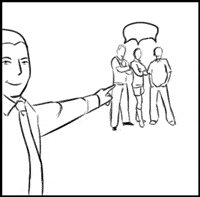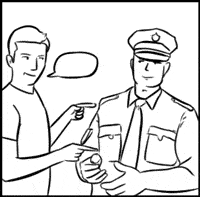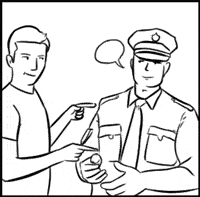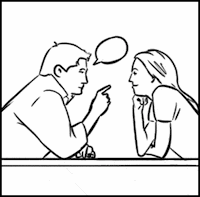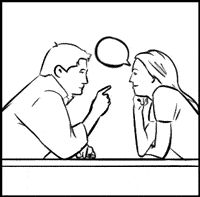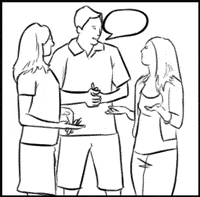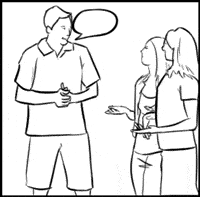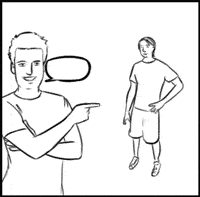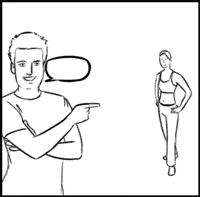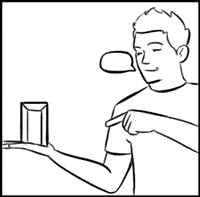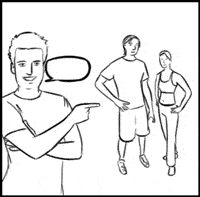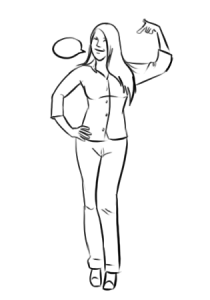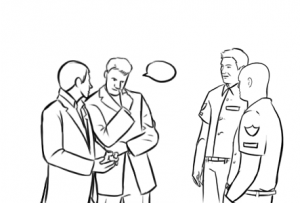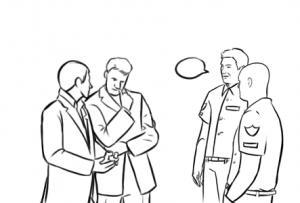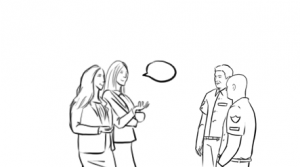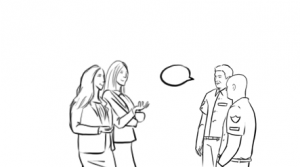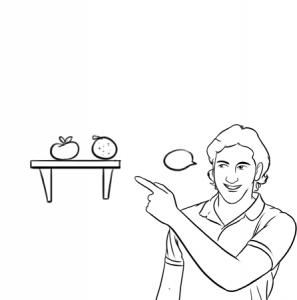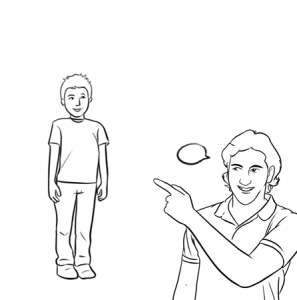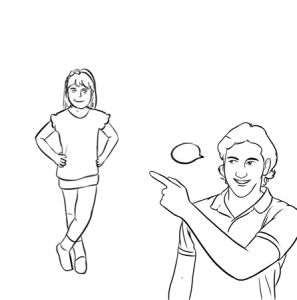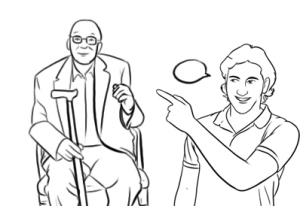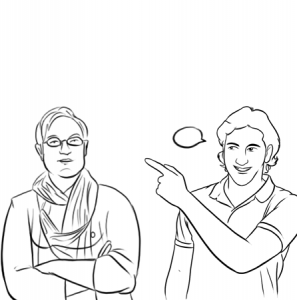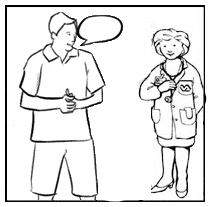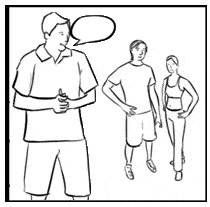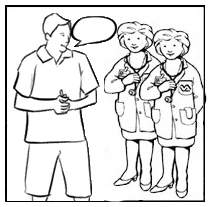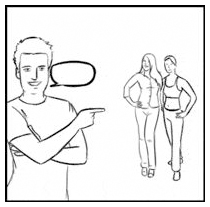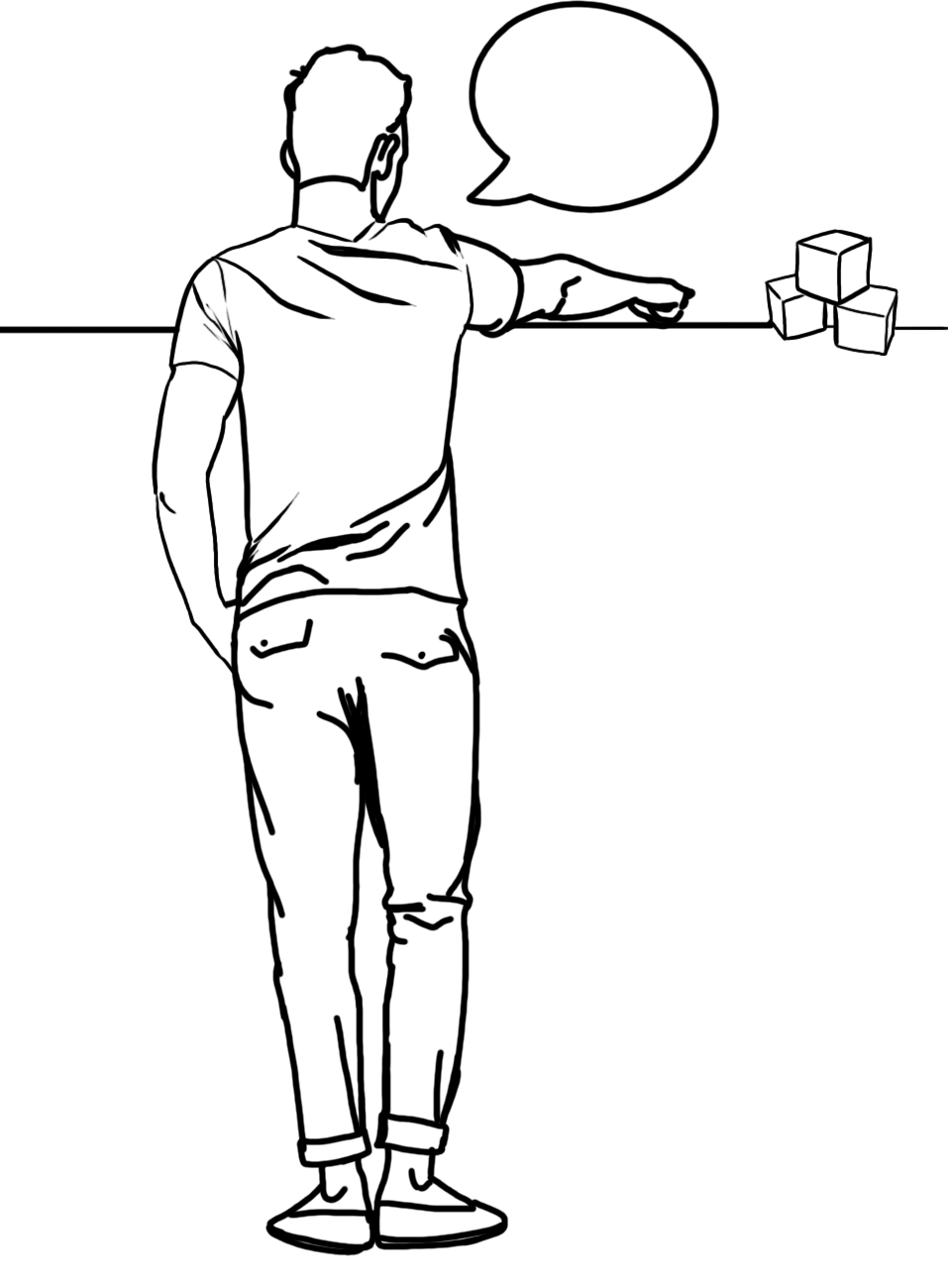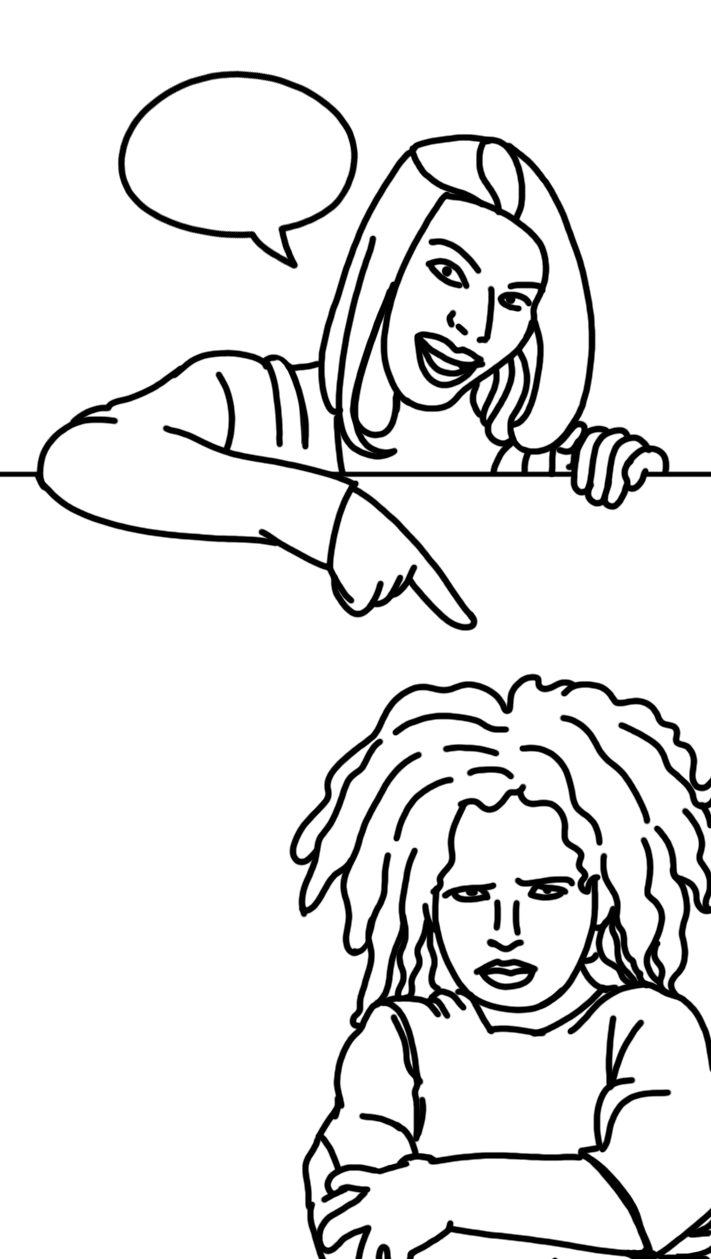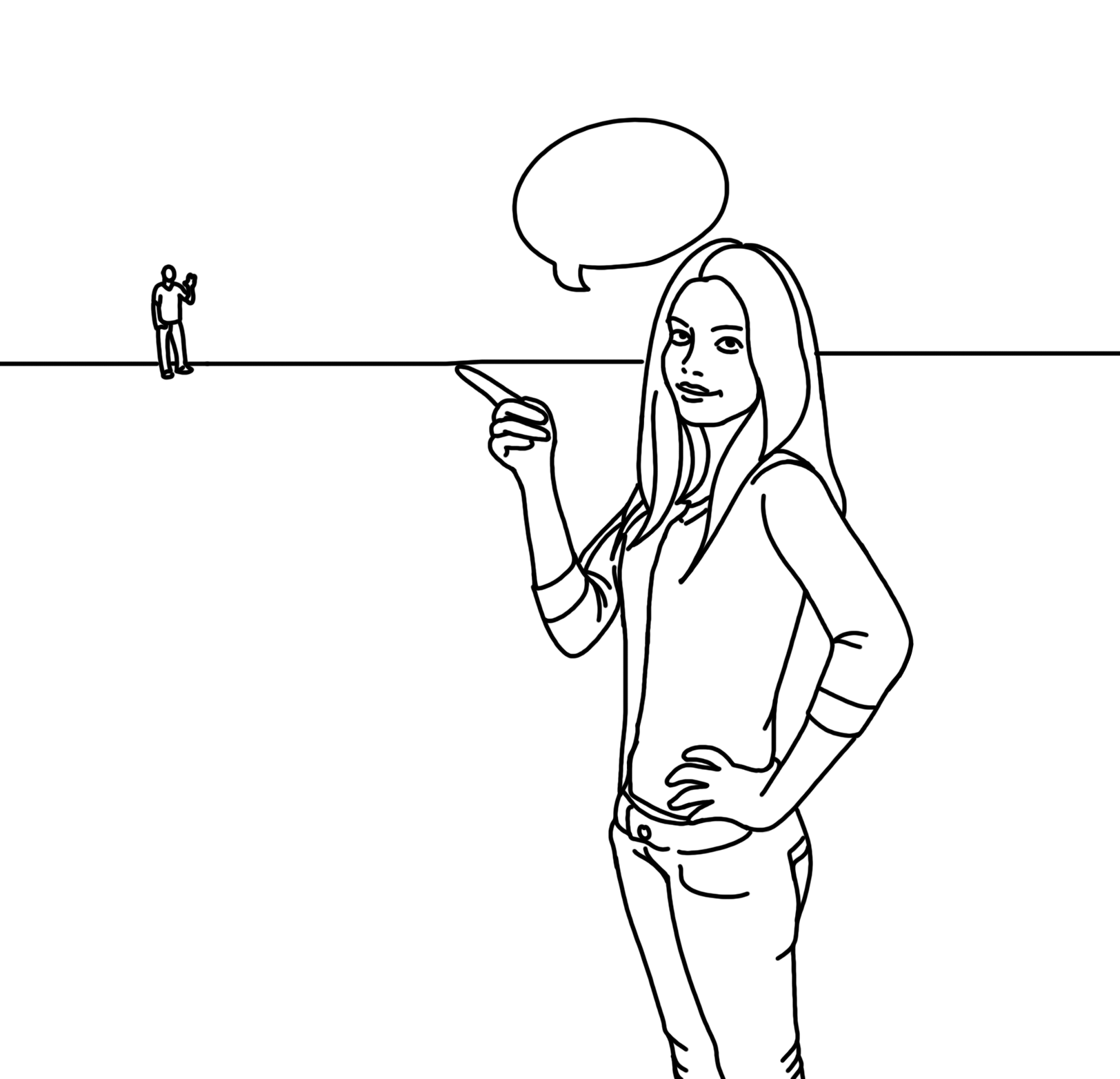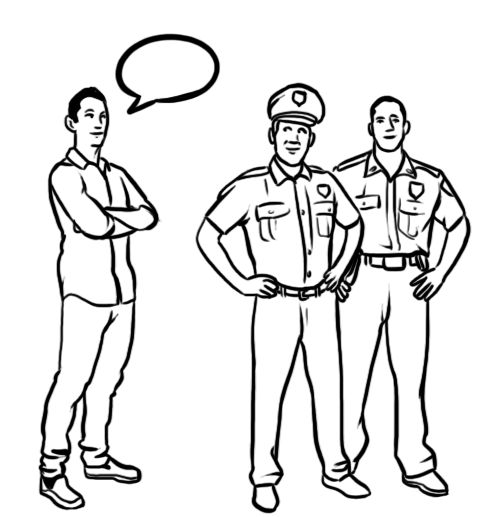
In my list of basic words to learn, I suggest learning subject pronouns (I, you, he, she, it, we, they) using pictures. Instead of “‘Ich’ is the German word for ‘I,'” I suggest memorizing “‘Ich’ is the German word for [Guy pointing to himself].”
But this may seem like a trivial point. After all, it’s only a small handful of words, and what’s the harm in memorizing just a few translations?
The Complex World of Pronouns
Pronouns can be tricky to learn, because every language has slightly different ways of grouping people. For instance, most European languages have separate words for Singular-You (you) and Plural-You (y’all). In Tagalog and Cherokee, the English ‘we’ is broken into four handy pronouns: ‘you and me’, ‘someone else and me’, ‘several other people and me’, and ’you, me, and one or more other people’. In these languages, ‘We should get dinner’ is much less vague in all sorts of contexts.
In Navajo, you’ll even find a fourth person: I (first person) could be talking to you (second person) about our friend Joe (third person), who recently got into a car accident with some guy on a motorcycle. Now if we were speaking in English and I said “he got injured,” you might not be sure whether I was speaking about Joe or the motorcyclist. But in Navajo, you wouldn’t run into this problem. Navajo splits Joe (a character that we’re in the process of discussing – third person) and the motorcyclist (a new character who wasn’t really a central part of our discussion – fourth person) apart. This lets you say “Joe got into an accident with a motorcyclist and he (the motorcyclist) got injured.” Neat.
Many other languages can also use pronouns to indicate levels of formality – a trait that English lost back in the 17th century. Back then, you would use thou when talking to family members or friends, and ye to speak with strangers or bosses. Now that we’ve lost this, we can’t be quite as passive-aggressive and insulting as we once could. In German, you can say something to a colleague like “Well, naturally ye mayeth take my sandwich from the work fridge. Why wouldn’t that be alright with me?” And if you smirk in just the right way, your colleague will get intensely offended, but won’t be able to say anything, since you treated him with the utmost respect. In modern English, all we have is “Why did you take my sandwich, you dick?”, which is a little less nuanced.
Side note #1: What about thee and you? Those were thou and ye in a different case, just like her and him are she and he in a different case. So thou might give him some money, and in exchange, he will give thee a loaf of bread. We’ll deal with cases in depth in an upcoming article (I’m allllmost done with it)
Our old thou and ye did double duty as informal/formal AND singular/plural. This is a common occurrence in a lot of languages, particularly those in Europe. The history of this is kind of neat: basically, languages seem to have a tendency to start with two kinds of second person pronouns – singular (you) and plural (y’all) – probably because this is pretty damn handy in social situations. It doesn’t get much clearer than “Hey, I have to talk to y’all!”
But then, at least in 4th century Latin, Roman emperors appeared, and people needed to figure out how to distinguish between regular Joes and big mighty Ceasar. So they began to refer to emperors in the plural (and those emperors referred to themselves in the plural too, using the royal “we” instead of “I”). In time, people started using the plural form to refer to all sorts of people in powerful positions, and that, in turn, resulted in the plural form being used as a mark of respect for anyone who wasn’t a close friend or a family member.
Korean, Japanese and the Chinese group of languages have all sorts of formality levels, depending upon your social rank, the rank and age of the person you’re talking to, and your relationship with them.
Learning Pronouns
Due to all of this complexity, translations can kind of fall flat. Learning that German’s Sie is the word you use for “Plural or formal you” is not particularly memorable, and leads to a lot of confusion. It would be better to remember that Sie is the word you use When addressing the police, when talking to two strangers or when talking to the customs agent.
You could try to train yourself that way, by creating flash cards with “Sie” on one side and “You: for police, strangers and customs agents,” but you’re likely to remember the words (“For police, strangers and customs agents”), rather than the meaning (For that uniformed guy who is writing you a traffic ticket right this moment). The trick to forcing yourself to think about meaning is to use pictures (a picture of someone talking to a policeman), or a combination of pictures and words (a picture of someone talking to a policeman with the caption “Polizei, Fremder und Zollagenten” (Police, strangers and customs agents).
Since there don’t seem to be many pictures of people pointing at other people, I had a bunch commissioned by an awesome artist on Fiverr. Here they are, for your viewing pleasure. Add words as needed to help you nail down any particularly tricky pronouns. If your language makes a distinction between “You” for friends and “You” for strangers, then grab one of my pictures of “You,” below, and add the word “Friend” or “Stranger” in your target language.
What about all the other, non-subject pronouns, like my, mine, his, her, our, them, etc? As long as you’ve learned the basic subject pronouns in your language, then you can use those to learn every other pronoun you have. What’s ‘my’? It’s the word that fits into this blank: __(I) dog is 14 years old. What’s ‘him’? It’s the word that fits into “I gave it to __ (he).”
As long as you’ve learned the basic subject pronouns in your language, then you can use those to learn every other pronoun you have.
Pictures of Pronouns
These aren’t yet comprehensive, but you should be able to cover most of your bases by adding a few clarifying words, as described above. If you could really use a particular picture that isn’t here, let me know what it is in the comments. I’ve tried to make sure that all the figures are as different as possible, so that they aren’t easily confused. Ideally, in the future, I’ll have these inked in and colored differently, so that they’re as distinct as possible.
I – First person singular
We – First person plural
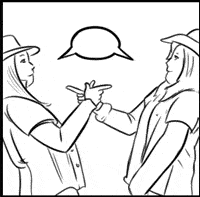
You – Second person singular (formal/informal)
You – Second person plural
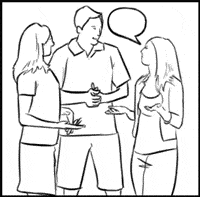
He – Third person singular masculine
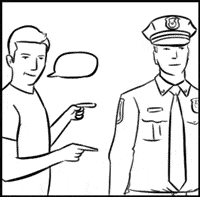
She – Third person singular feminine
It – Third person singular inanimate/neuter
They – Third person plural
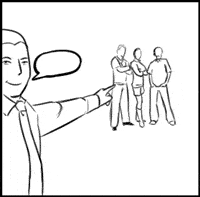
Me
You – Formal Plural Male
You – Informal Plural Male
You – Plural Female
You – Informal Plural Female
It
You – Third person young male
You – Third person young female
He – Third person older male
She – Third person older female
You – Singular Female Formal
You – Couple
You – Plural Female Formal
They – Female Plural
Third person plural–inanimate/neuter
Third person singular–near
Third person singular–far
Second person female speaker–formal
Second person plural–formal
That’s it! If you’re missing some key picture for a pronoun in your language, figure out what group of people would be involved, who’s pointing at whom, and who’s saying what, and let me know in the comments. I’ll see what I can do. Or even better for my wallet, get your own done ($5 for a three image set), send them to me, and I’ll post them here along with my thanks. 🙂





